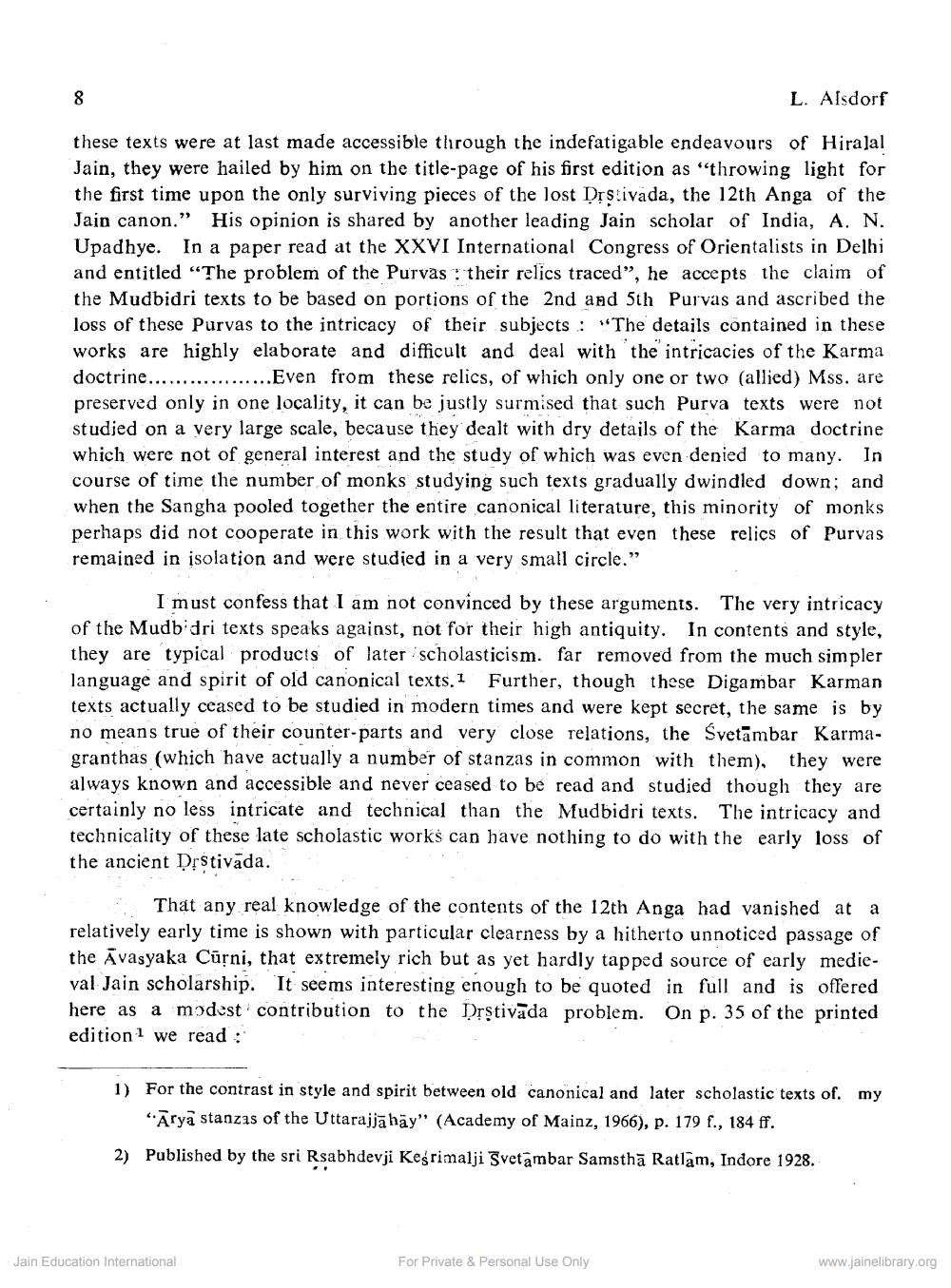Book Title: What were thecontents of Drstivada Author(s): L Alsdorf Publisher: Z_Jinvijay_Muni_Abhinandan_Granth_012033.pdf View full book textPage 2
________________ 8 L. Alsdorf these texts were at last made accessible through the indefatigable endeavours of Hiralal Jain, they were hailed by him on the title-page of his first edition as "throwing light for the first time upon the only surviving pieces of the lost Drstivada, the 12th Anga of the Jain canon." His opinion is shared by another leading Jain scholar of India, A. N. Upadhye. In a paper read at the XXVI International Congress of Orientalists in Delhi and entitled "The problem of the Purvas: their relics traced", he accepts the claim of the Mudbidri texts to be based on portions of the 2nd and 5th Purvas and ascribed the loss of these Purvas to the intricacy of their subjects: "The details contained in these works are highly elaborate and difficult and deal with the intricacies of the Karma doctrine.................Even from these relics, of which only one or two (allied) Mss. are preserved only in one locality, it can be justly surmised that such Purva texts were not studied on a very large scale, because they dealt with dry details of the Karma doctrine which were not of general interest and the study of which was even denied to many. In course of time the number of monks studying such texts gradually dwindled down; and when the Sangha pooled together the entire canonical literature, this minority of monks perhaps did not cooperate in this work with the result that even these relics of Purvas remained in isolation and were studied in a very small circle." I must confess that I am not convinced by these arguments. The very intricacy of the Mudbidri texts speaks against, not for their high antiquity. In contents and style, they are typical products of later scholasticism. far removed from the much simpler language and spirit of old canonical texts. Further, though these Digambar Karman texts actually ceased to be studied in modern times and were kept secret, the same is by no means true of their counter-parts and very close relations, the Svetambar Karmagranthas (which have actually a number of stanzas in common with them), they were always known and accessible and never ceased to be read and studied though they are certainly no less intricate and technical than the Mudbidri texts. The intricacy and technicality of these late scholastic works can have nothing to do with the early loss of the ancient Destivada. That any real knowledge of the contents of the 12th Anga had vanished at relatively early time is shown with particular clearness by a hitherto unnoticed passage of the Avasyaka Cürni, that extremely rich but as yet hardly tapped source of early medieval Jain scholarship. It seems interesting enough to be quoted in full and is offered. here as a modest contribution to the Drstivada problem. On p. 35 of the printed edition we read:" 1) For the contrast in style and spirit between old canonical and later scholastic texts of. my "Arya stanzas of the Uttarajjahay" (Academy of Mainz, 1966), p. 179 f., 184 ff. 2) Published by the sri Rsabhdevji Kegrimalji Svetambar Samstha Ratlam, Indore 1928. Jain Education International For Private & Personal Use Only www.jainelibrary.orgPage Navigation
1 2 3 4
